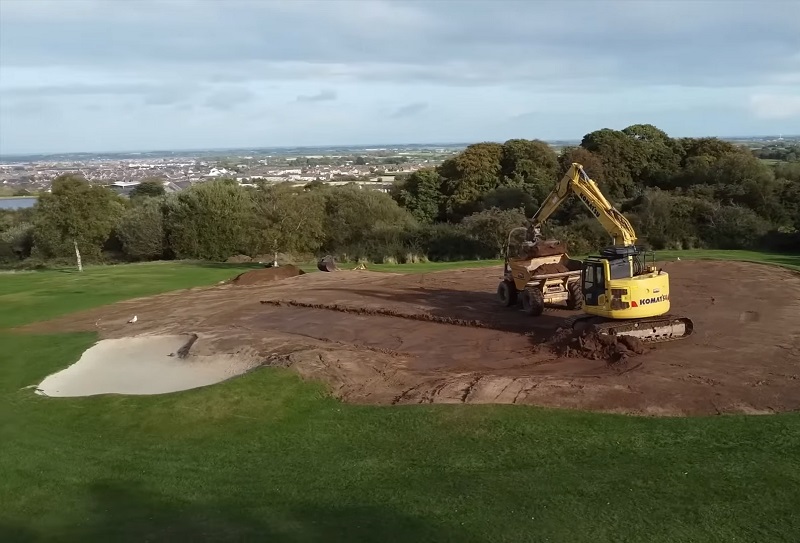Golf courses are known for their beautiful and serene landscapes. However, have you ever wondered what goes into making a golf course? Creating the perfect environment where players can challenge themselves while having an enjoyable experience takes thoughtful planning, skilled artistry and considerable time.
In this blog post, we’ll go into detail about the process of creating a golf course and explore why it is important to ensure quality during each stage of construction. Golfers everywhere should read on to better understand what they experience when playing on these magnificent creations.
What Is A Golf Course?
A golf course can be best described as a carefully designed landscape that serves as an arena for golfers to engage in the popular sport of golf.
It comprises a series of holes, each with its unique blend of challenges and obstacles. Typically consisting of 9 or 18 holes, a golf course features meticulously maintained fairways, roughs, sand traps, and greens, ensuring optimal playing conditions for the participants.
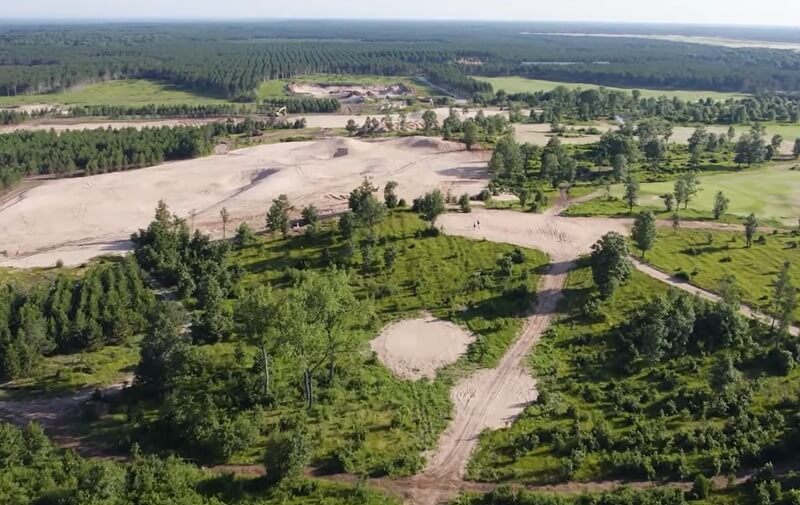
It also showcases natural elements such as water hazards and elevation changes, which add to the visual appeal of the course and influence the strategic approach that golfers must adopt.
Golf courses can vary greatly in size and design. Architects consider factors like topography, climate, and surrounding environment to create layouts that satisfy golfing enthusiasts’ demands for a diverse and invigorating playing experience.
How Is A Golf Course Made?
Creating a golf course involves many steps and can take multiple years to complete. Depending on the terrain and size of the project, the process may involve land surveys, soil studies, environmental assessments, design work and construction.
Design Principles
The first essential element in creating a golf course is the design. Course designers use specific principles to ensure that the overall layout meets certain playability standards and aesthetic appeal.
Designers consider terrain features such as elevation, soil type, drainage, and water hazards when creating the perfect setup for players. They also consider environmental aspects such as vegetation and wildlife to create a course that challenges golfers and provides a pleasant experience.
Planning and Design
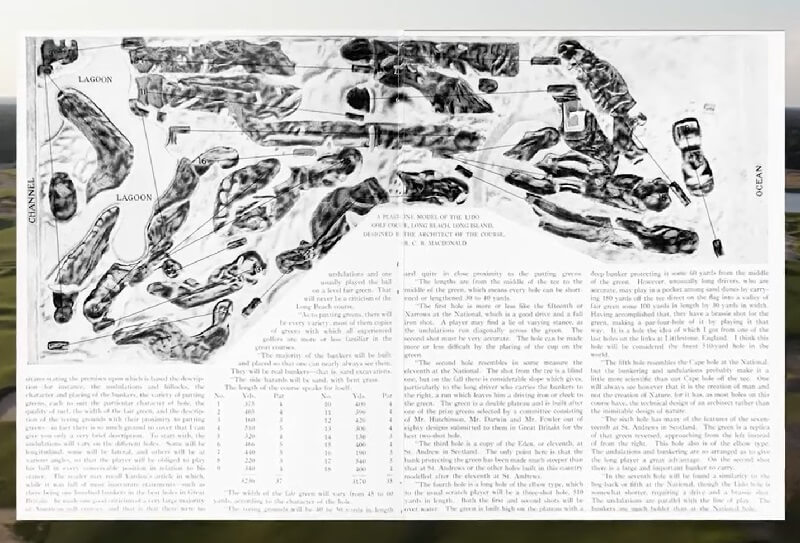
The planning and design phases are the steps in building a golf course. Course designers consult with architects and surveyors to create a layout that best suits the land’s natural features.
This involves examining the terrain, considering soil type and drainage, assessing water hazards, and considering vegetation, wildlife and other environmental elements.
Designers often use computer-aided software to help visualize their plans, allowing them to make changes quickly and accurately.
Construction
Pre-Construction
Before any structure can rise, the pre-construction activities must be meticulously completed. From soil testing and surveying to clearing obstructions such as debris, stumps or trees – extensive preparation is essential for a successful build.
Construction Work
The actual construction of the golf course begins once the pre-construction phase is completed. Designers and builders collaborate to create each hole, ensuring that it meets the desired look and layout while also adhering to principles such as playability and aesthetics.
Trees may be transplanted or removed during this phase, turfgrass seeded, and sand bunkers built. Irrigation systems are installed to provide water to the turfgrass and other vegetation on the course. Other construction activities may include grading, seeding, and sodding.
Construct Each Part of the Golf Course
Tees:
The construction of tees is a crucial part of golf course development. These are the starting points for each hole and need to be flat, well-drained, and of a suitable size to accommodate the number of players.
The process begins with the removal of the topsoil layer, followed by the leveling of the area. A layer of gravel is then added for proper drainage and topped with a layer of sandy loam soil. The area is then graded to ensure it’s level and compacted to provide a firm base. After that, the soil is prepared for seeding or sodding, depending on the chosen turfgrass.
It’s important to note that the size of the tee box should correlate with the hole’s length and difficulty. More challenging holes typically feature larger tees to allow for a wider range of shots. The tee boxes also need to be properly oriented to provide a clear line of sight to the fairway and the hole.
Finally, consider the local climate and how it would potentially affect the growth and maintenance of the turfgrass. The tee box is then marked with tee markers to indicate the starting point for play. Proper maintenance, including regular mowing, is crucial to keep tees in optimal condition.
Fairways:
Once the tee boxes are constructed, it’s time to create the fairway. This is a long strip of pristine turfgrass that runs in between two points (the tee box and the green). The width of this area should be wide enough to allow players room for error as they attempt to reach their target.
The first step in constructing a fairway is to make sure the soil is properly prepared. The topsoil layer should be removed and replaced with subsoil, sand, loam, or a sandy-loam mixture for better drainage and added stability. Then the area is graded and compacted to create a flat playing surface.
Next, turfgrass should be chosen based on climate, soil type, and the amount of sunlight available. Turf should be properly seeded or sodded and regularly maintained with fertilizers and regular mowing. Finally, a variety of obstacles can be added to the fairway such as bunkers, water hazards, trees or roughs. This helps challenge players and provides aesthetic appeal to the course.
Greens:
The green is the target area that players aim for in each hole. It’s typically a small, distinct section of highly manicured turfgrass, with an assortment of slopes and contours to provide added challenge.
The construction process begins with proper soil preparation, leveling, and compaction. Depending on the type of grass chosen, sod may be used to create the green. During construction, greens are usually at a higher elevation than the surrounding fairways and often feature undulations and slopes. The grass is then cut extremely short, which has an effect on playability as it affects speed and trajectory of balls rolling across it.
Greens must also be properly maintained with proper fertilization, irrigation, and regular mowing. This helps keep the grass healthy and provides a consistent surface for players to aim at. As with tees and fairways, various obstacles can be added around the green to add difficulty or aesthetic appeal.
The construction of golf courses requires an enormous amount of planning, design, and work. With its challenging yet enjoyable playability and picturesque aesthetics, the perfect golf course can be a source of pride and joy for players. When done properly, it should provide an entertaining experience that appeals to both experienced players and newcomers alike.
Bunkers:
Bunkers are an important element of many golf courses, as they provide a challenge for players and also add aesthetic value. While there is no single way to construct bunkers, there are certain steps that should always be taken to ensure the best possible outcome.
The first step in building a bunker is to determine its size and shape. This will be based on the angle of approach, the depth and width of the bunker, and the surrounding terrain. The area should then be cleared and leveled.
Next, the perimeter walls should be built around the bunker to give it definition. This can involve either digging a trench or building up banks with soil from outside the area. Once this is done, a layer of sand should be added to the bottom and sides of the bunker. This will ensure that water drains properly and provide a suitable surface for play.
The finishing touches involve adding vegetation such as grass, plants, or trees to soften the edges. This helps blend the bunkers with their surroundings while also providing an interesting visual effect. If needed, additional sand can be added to the top of the bunker to create a more challenging playing surface. With proper construction and maintenance, bunkers can provide an essential element to any golf course.
Water Hazard:
Before constructing the water hazard, identify a suitable location for the water hazard, which should be in line with the existing landscape but provide enough challenge for players. Then, depending on the situation, a large body of water may need to be created. This can involve digging a pond or lake or diverting an existing stream.
The surrounding terrain should also be taken into consideration when constructing a water hazard. Appropriate plants and trees should be added to help blend it with its surroundings while still providing an interesting challenge for players. Finally, proper maintenance is essential to keep the water hazard in optimal condition.
Final Touches
Once the course is complete, it is time for the final touches, such as pathways, parking lots and buildings. These amenities provide a comfortable experience for golfers and allow them to move about the course easily.
Maintenance
Once the construction process is complete, maintenance staff take over to ensure that the golf course remains up to standard. This can include mowing and trimming turfgrass, watering, fertilizing, and aerating the soil. Regular maintenance is essential in keeping the course enjoyable for golfers and preventing damage to the turfgrass or other vegetation.
How Are Golf Courses Maintained?
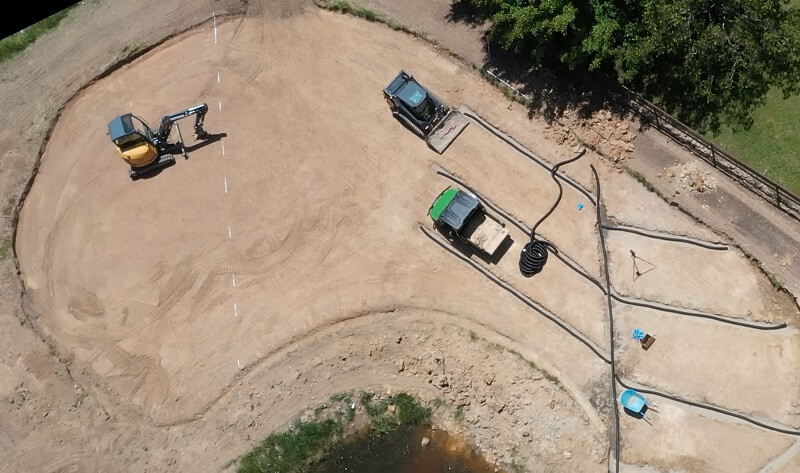
Golf courses require regular maintenance to ensure that they remain enjoyable for players. This can involve mowing and trimming turfgrass, watering the greens, and fertilizing and aerating the soil. Regular maintenance is essential in keeping the course up to standard while preventing damage to the turfgrass or other vegetation. Golf courses may also need to be checked for pests such as grubs or weeds that can negatively impact playability. Additionally, golf courses may require seasonal maintenance, such as snow removal in colder climates.
Other tasks, such as repairing bunkers and raking sand traps, are also necessary to maintain the golf course. Regular inspections should ensure that all course areas remain in good condition. Maintenance staff may also need to keep an eye out for any hazards on the course, such as standing water, that could pose a safety risk to golfers.
Golf courses may require various non-maintenance tasks such as providing food or drink service, cleaning and maintaining restrooms, or providing customer service to golfers. These tasks are important in ensuring that golfers have a pleasant experience on the course.
Maintaining a golf course is an ongoing process that requires dedication and hard work. However, the rewards of a well-maintained golf course can be immense. A well-maintained course ensures that golfers have an enjoyable and safe experience, allowing them to come back and play again. Additionally, a well-maintained golf course helps attract other players, increasing revenue for the course and its associated businesses.
Therefore, golf courses must be regularly maintained to remain enjoyable, functional, and profitable. With the right maintenance plan and a commitment to taking care of the course, any golf course can become an enjoyable and successful business.
Cost Of Golf Course Construction
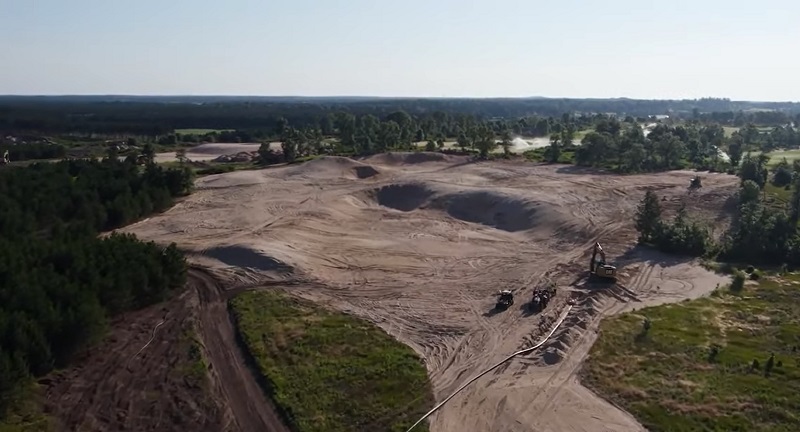
The cost of golf course construction can vary significantly depending on various factors such as location, size, design, and environmental considerations. Building a top-tier golf course often requires substantial financial investment. It necessitates meticulous planning and execution to ensure a new playing experience, striking the perfect balance between natural beauty and strategic gameplay.
Furthermore, environmental regulations and sustainability practices increasingly play a crucial role in modern golf course construction, contributing to overall expenses. With golf course designers striving to create memorable and unique courses that captivate players, it is no surprise that the costs can quickly escalate, depending on the desired level of quality and sophistication.
Generally speaking, a typical 18-hole course in the United States will range from $1 million-$15 million.
Costs Associated With Maintaining A Golf Course
Maintaining a golf course is no small feat, as it involves many expenses critical to providing golfers with an exceptional experience.
One of the highest costs is the ongoing care of the turf, including mowing, fertilization, and irrigation. In addition, golf course managers must allocate funds toward pest and disease control, ensuring plants remain healthy and vibrant.
To maintain the course’s aesthetic appeal, landscaping and tree maintenance services also come into play, which could lead to additional costs associated with hiring qualified staff and purchasing the necessary equipment.
Moreover, certain regions may require golf courses to adhere to environmental regulations, making it necessary to adopt sustainable practices that can result in increased expenditures.
Overall, the costs associated with maintaining a golf course are substantial, making it imperative that course operators manage resources and revenues efficiently while providing premier amenities for golfers.
Timeframe Of Golf Course Construction
The process of constructing a golf course is a meticulous and time-consuming endeavor that requires a significant amount of planning, resource allocation, and expertise.
The typical timeframe for developing a golf course varies depending on the complexity of the project and the availability of resources but generally ranges from 12 to 24 months.
The Factors Make A Good Golf Course
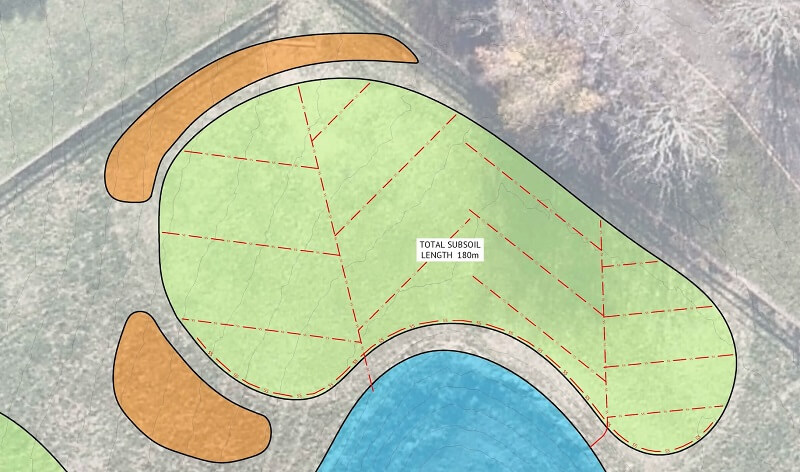
When creating a golf course, many factors need to be considered to ensure quality. Here is a look at some of the most important considerations:
- Layout: The course layout should create an enjoyable experience for players while providing challenges. Architects should consider factors such as the length of each hole, how they will interact with existing terrain, and player safety.
- Holes: The design of each hole should feature an interesting combination of strategic risk-reward opportunities for golfers. Architects must factor in such elements as tee boxes, fairways, bunkers, water hazards, and green complexes.
- Terrain: The terrain should be varied enough to create a challenging experience for all levels of players. Architects need to consider the topography and soil type to create an optimal environment for golfing.
- Maintenance: Proper maintenance is key to ensure that the course is always in top condition. Architects should consider ongoing maintenance needs and how they will be met to keep the course playable year-round.
How To Choose A Golf Architect?
Selecting the ideal golf architect to create your dream golf course requires thorough evaluation and consideration. Begin by understanding your vision and goals for the course design, ensuring the architect you choose aligns with these plans.
Conduct extensive research, seeking recommendations from industry professionals and examining previously completed projects by each candidate.
Evaluating architects based on their portfolio, experience, and design philosophy can provide valuable insight into their ability to deliver the desired outcome.
Equally important is understanding the available budget and any possible site constraints, as these factors can greatly influence the selection of an appropriate golf architect.
Establishing effective communication channels and fostering a strong working relationship throughout project planning and construction shall be key to achieving a successful result.
Remember, a well-chosen golf architect will help turn your vision into reality while enhancing your course’s playability, aesthetics, and environmental sustainability.
Related post:
- What Is a Links Golf Course? Definition & Meaning
- What Is A Golf Driving Range? Everything You Need To Know
- What is An Executive Golf Course? An Introduction to the World of Golf
- What Is A Bunker In Golf? What You Need to Know
Conclusion
Creating a golf course is no easy feat; it takes skill and time to ensure that everything comes together in the end. Numerous steps exist in creating a quality golf course, from surveying the land to installing drainage systems. The proper planning and care put into these courses will be appreciated by all who experience them for years to come.
So the next time you tee up on a beautiful golf course, take some time to appreciate all the hard work that went into creating it. Consider thanking the people responsible for bringing your favorite course to life!

